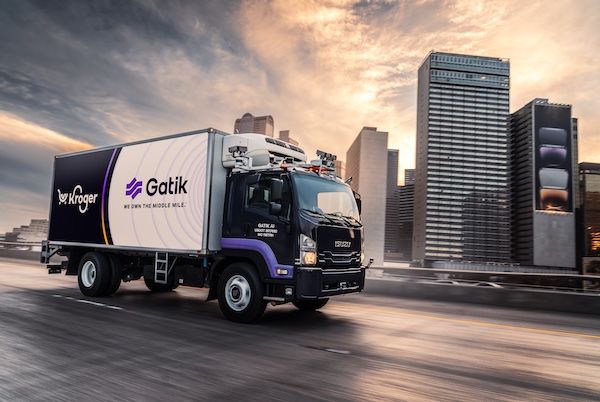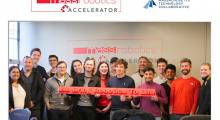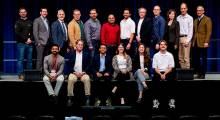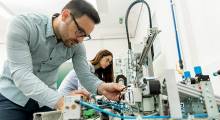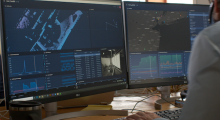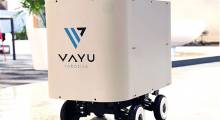Robotics startups, investors, integrators, and end users are grappling with vendor consolidation, heightened demand and public expectations, and a tightening of available funding. How can they navigate such challenges?
Harpinder (Harpi) Singh is a partner at Innovation Endeavors and an entrepreneur with nearly two decades of experience building products for emerging industries at the intersection of mobile, data, and deep tech.
Prior to becoming a partner at Innovation Endeavors, Singh was co-founder and CEO of Slice Technologies, a data and analytics company that provides e-commerce market insights to the world's largest consumer brands and was acquired by Rakuten. He also co-founded FiberTower, which claimed to be the largest independent provider of backhaul and was also successfully acquired.
Innovation Endeavors partner Scott Brady was co-founder in both Slice and FiberTower. At Innovation Endeavors, Singh led investments including those in Gatik, which is developing self-driving trucks for urban logistics, and Viaduct, a machine learning platform to empower automakers and their partners to make safer, personalized, and reliable vehicles.
Singh earned a bachelor’s degree in computer science at IIT-BHU in Varanasi, India. He earned an MS in computer science from Indiana University and an MBA from Stanford Graduate School of Business./p>
Robotics 24/7 recently spoke with Singh about why autonomous vehicle and robotics startups should keep their focus on success.
A serial entrepreneur provides perspective
How did your background prepare you for high tech and robotics?
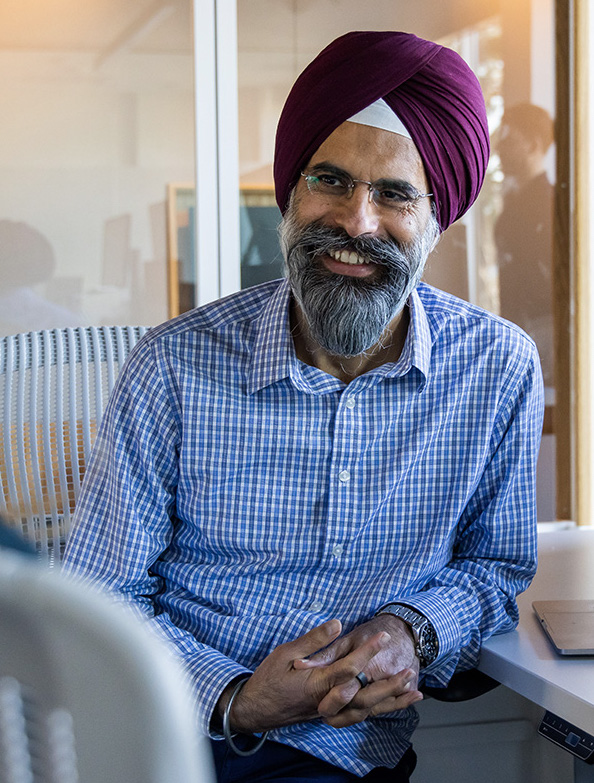
Singh: I grew up as a software engineer, and I originally came to the U.S. for a Ph.D. in high-performance computing. ... During grad school, I met co-founders and then started two companies over the next 18 years.
After FiberTower built out the wireless infrastructure space over 13 markets, it was acquired. I then got back together with the same founding team in the data analytics space. By the time Slice was acquired by Rakuten, I was head of product and CEO.
I have a technical and product experience that informs how I look at investments. Innovation Endeavors was an investor in my second company, and I do a lot of investing in supply chain and infrastructure/cybersecurity.
In addition, I teach two entrepreneurship classes at Stanford about innovation and scaling. The tech ecosystem in Silicon Valley and the U.S., where people nurture one another, is hard to replicate.
What were your observations from Manifest and robotics events since then?
Singh: I thought the show was good in two respects. I connected with a lot of people I wanted to meet, and I found more companies of different kinds on the show floor than I expected, if less startups. The startups that came to meet customers found lots of VCs.
Innovation Endeavors hosts a supply chain event called Link for 12 to 15 supply chain leaders. There are no pitches; we just present their peers and startups we think are valuable.
Our corporate members appreciate sharing advice and giving product feedback to influence startup roadmaps.
What do you look for when you evaluate technology startups?
Singh: We invest early, in seed and Series A rounds. At the core, it comes down to two things. The first part is the team. All startups evolve, but you're emphasizing backgrounds, intentions, and what motivates the team.
I also look for what problem the startup is addressing. It could be a need for optimization, something changing in supply chain networks, or new ways of thinking about existing or emerging problems. We're looking for the right tailwinds to support founders' visions.
Autonomous vehicle opportunities and challenges
Why did you choose to support Gatik?
Singh: For one thing, we liked the team members. They had all worked together and had long backgrounds in robotics.
Second, they were addressing a need we hadn’t heard before. At Innovation Endeavors, we do a lot of proactive work, picking areas and themes within those areas, plus talking to a lot of people.
Back in 2018, we spent a lot of time on sidewalk robotics, but there were questions about unit economics and scalability. When we met this team, it was presenting something related but different—middle-mile deliveries between stores and from warehouse to warehouse, as supply chain networks get denser.
The third piece—we had struggled with the idea of general autonomy and weren't sure of the timeline. Gatik said, “We’re going to the middle mile with only constrained routes.” That narrowed the problem rather than “boiling the ocean,” giving them a shot at succeeding.
Innovation Endeavors led Gatick's seed round and its Series A, which was in 2020, when the market wasn't very favorable to autonomous vehicle startups. There was already fatigue among investors.
Is there anything special about the middle mile for autonomous vehicles?
Singh: You can look at it as a 2x2 grid, with the size of the market opportunity and visibility. The sizes of long-haul, middle-mile, and city mobilty are all humongous. There's no problem with the total addressable market.
It’s a question of feasibility and how long it will take. City driving is the long tail, with beyond 95% fuctionality, and safety is paramount. We’re seeing some companies demonstrating success.
Long haul has other issues, like carrying a lot of load, exacerbating safety challenges.
Despite the long tail and regulatory/safety concerns, I'm bullish on each segment. A lot of work has been done in the past several years benefitting everybody.
Where do you see the most opportunity—long-haul shipping, last-mile deliveries, passenger ride sharing?
Singh: I think the opportunity is still super large and exciting in the long run.
In the short term, a bit of a reset has to take place over the next 18 months, like a nuclear winter for fundraising for autonomy. Startups like Embark and TuSimple have had difficulties because they are upside-down in cash and trading.
It's also a difficult fundraising climate in public markets. The sector is long on promises and short on evidence of delivering something, so people are cautious.
Companies that succeed will be those that are well-capitalized—large companies—or those like Gatik, which have demonstrated commercial success, gone through evangelizing, and are working with large customers.
Investment climate and startup advice
We've seen macroeconomic headwinds including trade conflicts, the COVID-19 pandemic, labor shortages, and now inflation and less-available venture capital. How can startups proceed?
Singh: We invest for long-term trends, but they have to be mindful of the need to raise money every 18 to 24 months. We continue to look for new approaches and make investments, but we need to make sure there's demonstrable success in the short term.
It's harder to raise money for people already in the middle of it. Their companies might have raised funding four to six years ago but didn't have technical proof or commercial traction. It's harder for them than for existing or brand-new players.
The number of mobile robot companies that are truly profitable you can count on a few fingers, let alone one hand. Beyond demonstrating routing, your company needs a big balance sheet, must be under a major automaker's umbrella, or has to have serious evidence of usage by large customers.
When [autonomous truck developer] Argo threw in the towel, we knew that even companies with major backers would take a lot more time and money. People are realizing that it's not a fast market, and this space needs an MVP; it's not like the cloud.
What advice do you have for vehicle and robotics startups and users?
Singh: Especially for startups, if you can solve a problem that’s an emerging need, that puts you in a better position than helping to optimize one part of a process.
For example, for Gatik, retailers building warehouses closer to consumers—that’s a new need. It's no longer a matter of managing just one to two warehouses in a market. How do you connect 10?
We often hear from people implementing robots in warehouses that startups are addressing one bottleneck, but many times, it's part of a larger process. Improving picking rates may not address other parts, so you must know how you fit in and what's upstream or downstream.
Users are tired of all the processes they may have to re-engineer and all the parts they have to integrate. That raises the bar on how much pain they're willing to go through before implementing something or bringing in corporate buyers or integrators to do it for them.
What future trends are you looking forward to?
Singh: Automation sales cycles take a long time in warehouses and interconnected supply chains, and we're drawn to solutions for big problems. Innovation Endeavors has invested in Third Wave Automation because we think autonomous forklifts offer value.
One area we’re excited about is scenario planning. We’re hearing from heads of supply chains that with all the disruptions—it has been one thing after another—as networks evolve, they want more nodes.
“If something happens, what do I do? If one product line sells more, how I scale production and manage inventory?”
Scenario planning is currently done with old software and little automated hardware, but supply chain leaders want to do more of this. They need actionable data to make their supply chains more resilient.
Another thing we've heard in the Link ecosystem is that data is siloed—how can we connect it? Nobody has the appetite to build a data-dumping project, and data fragmentation is a big problem. It can only be solved with a clear use case, visibility into inventory, and then a layer above that to be able to do “What if?” planning on a weekly basis.
About the Author
Follow Robotics 24/7 on Linkedin
Article topics
Email Sign Up

